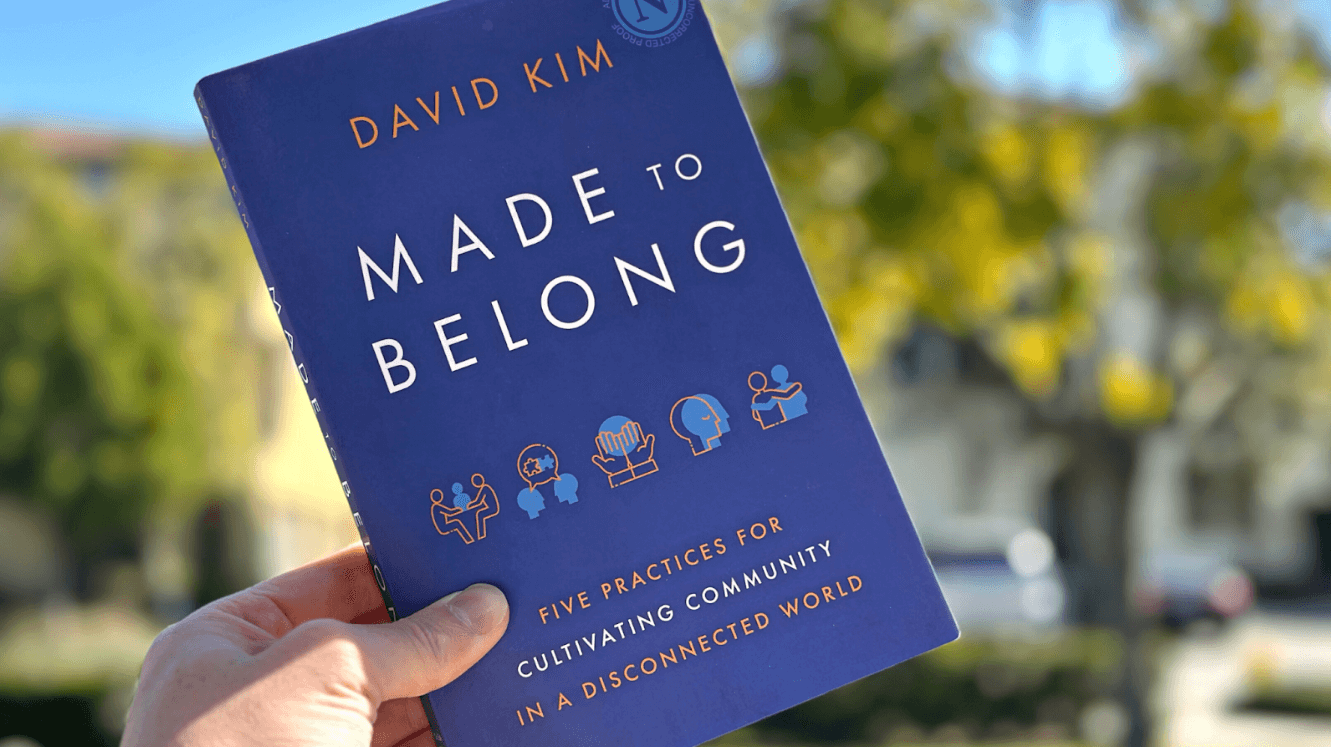Where can the lonely look to find connection? In Made to Belong, David Kim discusses five practices for cultivating community in a disconnected world.
Kim begins with a startling story from his youth: His best friend was breaking up with him. Their relationship was one-sided, and Kim was to blame. Thankfully, Kim adds how they actually ended up remaining best friends into their adulthood. But the story illustrates the difficulty of making genuine connections with others. In Made to Belong, Kim writes persuasively that our sense of belonging and true community can only come from Jesus and through the relationships we build from our relationship with Him.
Cultivating Connection
Part 1 of Made to Belong explains why belonging is so hard. Kim shares what he calls “the false connection cycle” and lists common barriers to belonging. It is interesting how these play out in our personal lives as well as in the life of the church. Throughout the book, Kim shares about his own experience as an Asian American immigrant male. His experiences are relatable to anyone who has felt lonely, isolated, and like an outsider.
Part 2 is the practical side of the book that shows how belonging is possible. Kim presents five practices for cultivating connection:
- Priority: Let’s talk about our commitment issues
- Chemistry: The difference between clique and click
- Vulnerability: Lowering the wall of shame for connection
- Empathy: Supporting others well in a self-absorbed world
- Accountability: The necessary road to Christlikeness
Kim also lists two steps to prioritize relationships: (1) make a list of significant people in your life, and (2) structure your time with others. This book is extremely helpful, with advice and anecdotes throughout.
Church and Culture
Church leaders will find Kim’s experience as a pastor to be insightful. He shares that chemistry is something that must be discovered, and this especially plays out in the life of the church. This section allowed me to identify some toxic traits in others (people who overtalk, people who bring everything back to themselves, people who criticize often, people who victimize themselves) while warning me about how I must watch out for these traits in myself.
Being vulnerable, empathy, and accountability are next. Culture has a large part in how these play out, and Kim helps you give them consideration. Even Christians can find ways to avoid these topics, such as hiding behind fake spirituality, using holiness to hinder yourself and others, and following a lack of authentic vulnerability modeled by leaders. I appreciate how Kim writes clearly about these issues.
Cultivating Community
Part 3 describes how belonging deepens our discipleship to Jesus. He shares that belonging is a blessing of being fully known and truly loved. And he explains how those who are struggling with loneliness may have been given a seasonal gift of isolation. He encourages examination, communication, and preparation during this time. The book ends with a call to seek Jesus in solitude, and to cultivate belonging in Christian community.
Kim says that the Christian life isn’t just difficult to do alone—it is impossible. After reading this book, I am convinced that this is true. I am inspired to be a better leader in cultivating community with the people that Christ has given to my care. And I am drawn to cling closer to Christ and his church—where the lost can be found, and where strangers can become sons.
I received a media copy of Made to Belong and this is my honest review.

